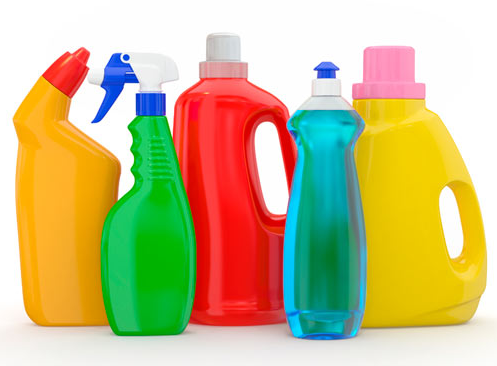Hidden hazards found in green products

A University of Melbourne researcher has found that common consumer products, including those marketed as 'green', 'all-natural', 'non-toxic', and 'organic', emit a range of compounds that could harm human health and air quality. But most of these ingredients are not disclosed to the public.
Dr. Anne Steinemann, Professor of Civil Engineering, and the Chair of Sustainable Cities, from the Department of Infrastructure Engineering, Melbourne School of Engineering, is a world expert on environmental pollutants, air quality, and health effects.
Professor Steinemann investigated and compared volatile organic compounds (VOCs) emitted from 37 different products, such as air fresheners, cleaning products, laundry supplies, and personal care products, including those with certifications and claims of 'green' and 'organic'. Both fragranced and fragrance-free products were tested.
The study, published in the journal Air Quality, Atmosphere & Health found 156 different VOCs emitted from the 37 products, with an average of 15 VOCs per product. Of these 156 VOCs, 42 are classified as toxic or hazardous under US federal laws, and each product emitted at least one of these chemicals.
Findings revealed that emissions of carcinogenic hazardous air pollutants from 'green' fragranced products were not significantly different from regular fragranced products.
In total, over 550 volatile ingredients were emitted from these products, but fewer than three percent were disclosed on any product label or material safety data sheet (MSDS).
"The paradox is that most of our exposure to air pollutants occurs indoors and a primary source is consumer products. But the public lacks full and accurate information on the ingredients in these products. Our indoor air environments are essentially unregulated and unmonitored," Professor Steinemann said.
The most common chemicals in fragranced products were terpenes, which were not in fragrance-free versions. Terpenes readily react with ozone in the air to generate a range of additional pollutants, such as formaldehyde and ultrafine particles.
At this time, consumer products sold in Australia, the US and around the world are not required to list all ingredients, or any ingredients in a chemical mixture called 'fragrance'.
"Given the lack of information, consumers may choose products with claims such as green, natural, or organic, but those claims are largely untested," Professor Steinemann said.
Professor Steinemann will continue to investigate how and why we're exposed to pollutants and ways to reduce risks and improve health.
Additional Information:
- Products selected are commonly used in Australia, the US, and other countries in a range of environments (e.g., homes, schools, hospitals, workplaces, hotels, restaurants, stores, residential buildings, parks, child care and aged care facilities, gyms, homeless shelters, government buildings, airports, planes and public transport).
- Gas chromatography/mass spectrometry (GC/MS) headspace analysis was used to identify VOCs emitted from 37 products, representing air fresheners and deodorizers (sprays, gels, solids, oils, and disks), laundry products (detergents, dryer sheets, and fabric softeners), cleaning supplies (all-purpose cleaners, window and surface cleaners, disinfectants, and dishwashing liquids), and personal care products (soaps, hand sanitisers, sunscreens, lotions, baby lotions, deodorants, shampoos, and baby shampoo).
- Ingredients in consumer products and in fragrance formulations, are exempt from full disclosure to the public.
- For laundry products, cleaning supplies, and air fresheners, labels do not need to list all ingredients, or the presence of a fragrance in the product.
- For personal care products and cosmetics, labels need to list ingredients, except the general term "fragrance" or "parfum" may be used instead of listing the individual ingredients in the fragrance.
- For all products, material safety data sheets do not need to list all ingredients.
- Fragrance ingredients are exempt from full disclosure in any product, not only in Australia and the US but also internationally.
More information: "Volatile Emissions from Common Consumer Products." people.eng.unimelb.edu.au/aste … ann-article-2015.pdf
















